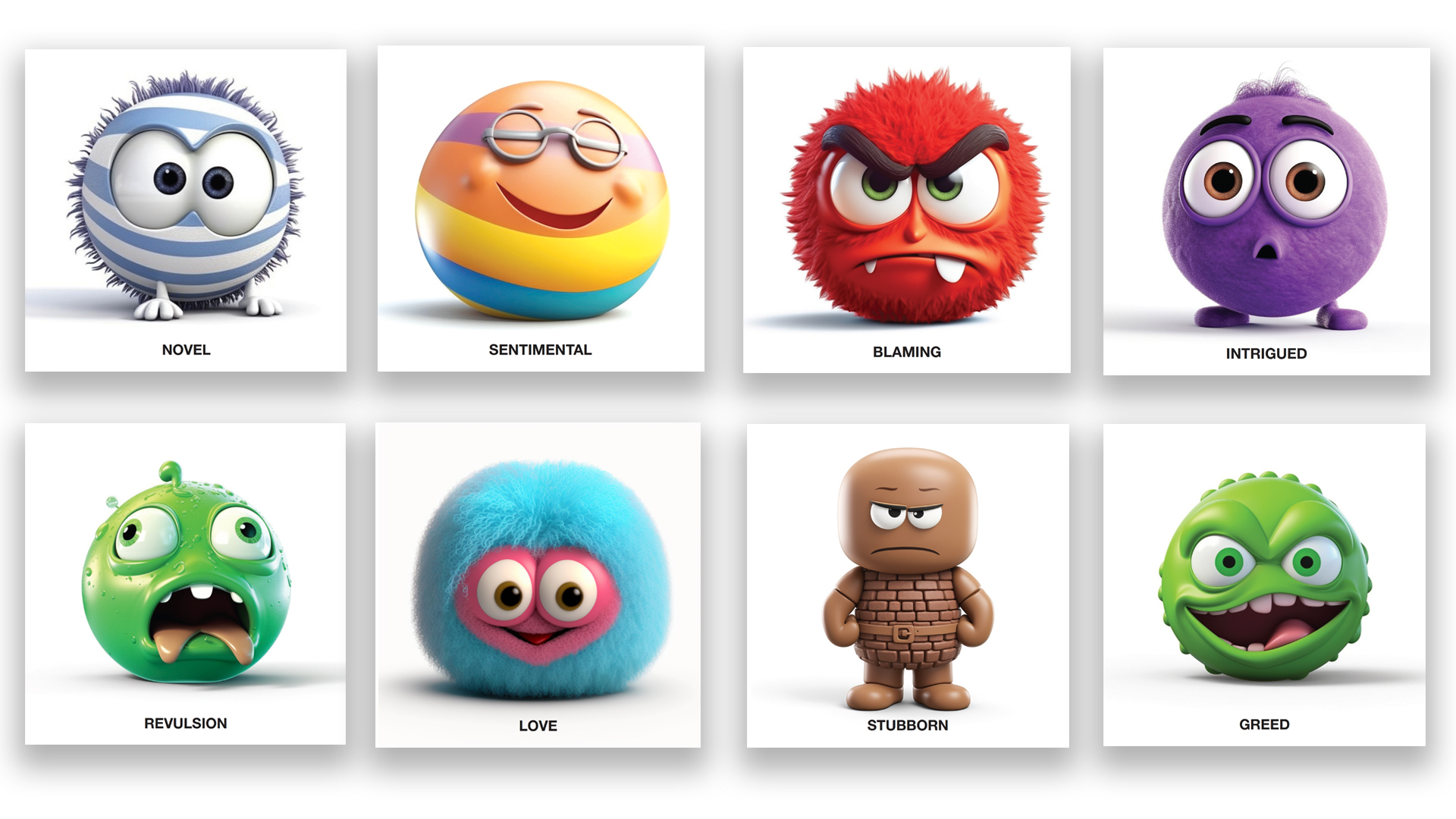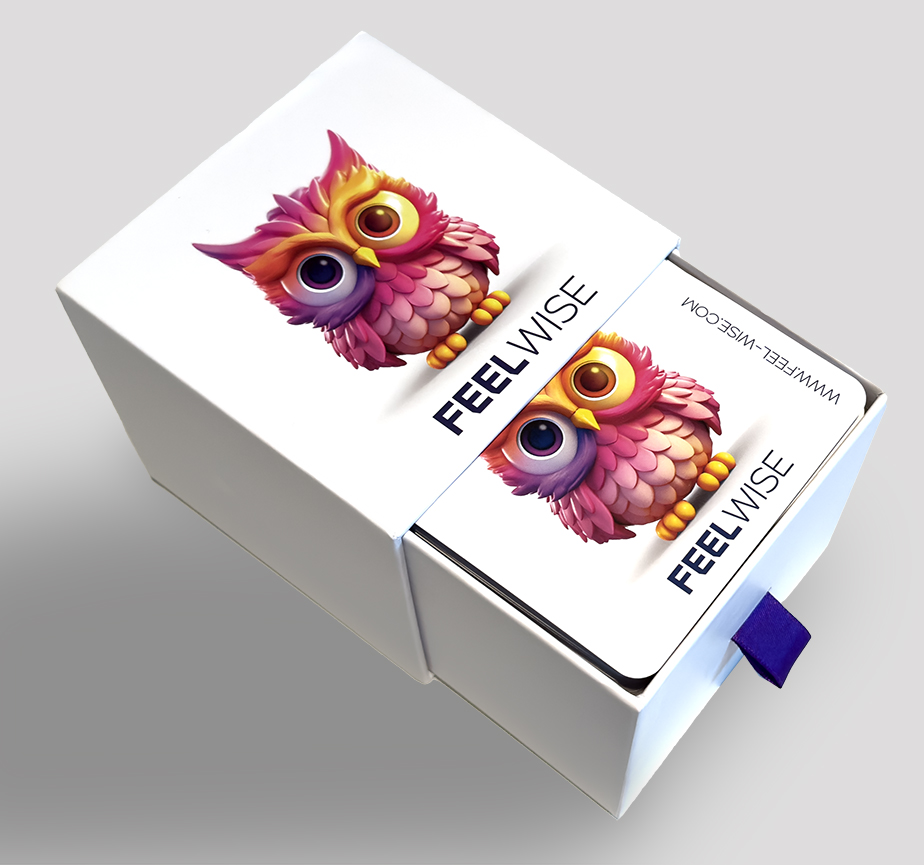
Tina Schweiger is the architect of the Feelalytics’ algorithm, which bypasses the analytical part of the brain and taps into pure emotional feedback by capturing reactions from the limbic part of the brain.
Feelalytics is a technology company that empowers businesses to leverage emotional feedback to improve overall workplace health.
Shortly after starting that company, Schweiger, who is also a published scientist in the field of emotions (“Are Emoji a Valid Predictor of In-The-Moment Mood?”) came up with the idea for its first consumer product – the FeelWise Card Deck.
The deck, which includes 60 colorful, information-rich cards has become an “all-in-one tool designed to guide you through identifying, understanding, and positively channeling your emotions,” Schweiger, who has a Masters in Industrial Organizational Psychology from Harvard, told California Business Journal.
ADVERTISEMENT
To learn more, we interviewed about her entrepreneurial journey and path.
Q: Tell us about your experience with guides and therapists?
A: Throughout my life, I’ve had people that were either spiritual people or creative people, who have really inspired me. They entered my life and just introduced me to many different ideas and activities, like the first yoga class I ever attended, which led me to become more introspective and practice meditation. These people can open up your mind, making you willing to hear more.
Then I was introduced to The Four Agreements, which is a really a simple book that is spiritual in nature, but so practical. What I was really drawn to in the book was how you can take a lot of these spiritual ideas and apply them to your life and practice them. And it was at the moment that I really found that practicing something gave me a way to explore a deeper meaning in life.
Q: How did the idea for FeelWise come about?
A: In graduate school, I was ready for something deeper that was tied to my passion for the human experience. Oddly, I’d always wanted to figure out how to unravel emotions. It’s a thing that people don’t even really want to talk about. But not only do I want to talk about it, I want to create a consistent framework for everyone to talk about it and be on the same page. And I’ve been searching for a framework for emotions so that I could create things, better user experiences, better technology, better understanding of people’s experiences. And there simply wasn’t one.
There was not one that tied together the traditional path of psychology in terms of mental illness with the newer path of psychology, which is positive psychology. And none of the models of emotions out there that I found felt very balanced. They felt really heavy and tilted toward negative feelings. Of course, it’s really important to process negative feelings. But it’s also important to thrive and to really harness positive emotions. So, when I was in graduate school and studying positive psychology, organizational psychology, motivation and creativity, I was able to learn the underlying science behind the study of emotion. And I just jumped on it.
Q: What is the audience for FeelWise?
It’s made for kids and kids would certainly benefit from FeelWise. It’s written at an adult level, particularly adults who are interested in personal growth and are interested in mindfulness. All of the 20 years that I spent reading Eckhart Toll and Byron Katie and Science of the Soul and so many great works, it can feel overwhelming. It could take you 20 years to get through all of it and really process and practice it. The epiphany for me was that our emotional states can give us a heads up on which direction we should go. And that’s the design that I put together. What emotion am I feeling right now? And if I’m feeling this emotion, then what type of practices should I be considering and in what order and how does that help me?
I couldn’t find a resource that could lead me answers about which resource was best for me when I felt a specific way. So, I designed a system that allows somebody to figure out how they feel and then progress through mindfulness toward resilience, by simply starting with identifying their current mood. And then once they’re feeling positive, they can progress toward thriving and including others in that positivity.
The audience is people who are interested in personal growth and then specifically therapists, educators and social emotional learning educators, behavioral health specialists, and special ed specialists. Another audience is people who are going to meditation and yoga studios and going to start a practice of learning about themselves and how they can process their negativity and thrive in life. I use FeelWise not only with myself, but as a way to unlock meaningful conversations with my children when they have meltdowns.
Q: How does someone use FeelWise?
A: Most people are blown away by the 152 amazing-looking emotions that are displayed as emojis. They are bright and colorful and they’re so expressive. They’re created so that people can organize them and really look through them and spend time with them and contemplate them. And I haven’t met a person yet who has opened it and has started with anything other than saying, “Oh my God, look at this. I had no idea there were so many emotions.”
And then they just start putting the cards out and flipping them over and they start really thinking about them. It’s only after a little while that they realize that there’s something you can do with them, which is look at the corner of the card and see what mindfulness technique that is suggested that you do to begin processing your emotions. These are simple, micro-mindfulness techniques we ask you to do if you’re feeling a certain emotion. That’s where it starts getting really powerful. Honestly, if somebody never gets past spending time looking at the emotions and reading them and contemplating them, they’re still getting a lot of benefits, even if they never progress to the mindfulness aspect.
Q: How does a therapist use FeelWise?
A: I spoke with a behavioral health specialist recently and he said that typically when he works with special ed kids, he is limited in what emotions he can guide his patients in expressing. Are they angry or sad or happy? It can be reductive. They have to force it. Maybe this person is having happy feelings and sad. They’re contradictory feelings. There’s no room for contradictory or 10+ simultaneous emotions to be expressed with the tools that the therapist currently has. How do their patients express to them that they feel curiosity and anger or disgust and excitement at the same time?

FeelWise allows a therapist to help a patient grow their literacy of emotions, their vocabulary that surrounds emotions. It’s a tool to help them talk about their emotions and really thoroughly explore the wide range of human emotions that exist, which isn’t currently available in the tools that are commonplace right now for therapists.
Q: What can be the outcome of using FeelWise?
A: I have a bigger objective with FeelWise. As per my studies at Harvard, I learned that emotional awareness is the first gateway into increasing your emotional intelligence. Emotional intelligence is unlike the intellectual intelligence that you’re born with. Emotional intelligence can be improved. And the first way to get there is by becoming aware of your emotions and labeling them. So, the outcome that I hope to get for everyone that uses FeelWise is to improve their emotional intelligence through first acknowledging, identifying, and naming and understanding their emotions. Plain and simple, everybody needs better emotional intelligence.
Copyright © 2024 California Business Journal. All Rights Reserved.
